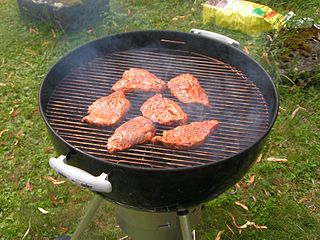
May with its promise of summer is the time of year when the local home improvement store features rows and rows of shiny barbecue grills. There’s the simple, basic grill; the ubiquitous Weber grill, and upscale gas grills with temperature control.
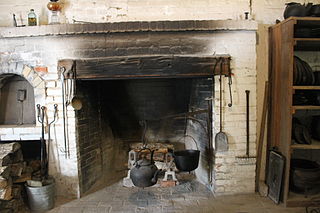
People have been cooking over an open flame since the discovery of fire. Grilling food over large and small fires, inside using an open hearth or outside in campfires was the norm until the first flat top iron ranges appeared in the early nineteenth century. Cast iron was a sort of wonder material then. It could be cast into prefabricated parts, and withstand repeated temperature swings.
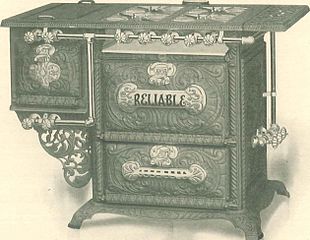
The next innovation was the shift from from wood to gas as a source of fuel. Gas was first processed from bituminous coal and used to power street lights and indoor lighting fixtures. In the late 19th century, electricity began replacing gas as a source of light. So the gas industry developed the gas stove.
These stoves didn’t require heavy cast iron to withstand the heat, and could be built in forms that were light and compact. They gave off less heat and didn’t require a chimney. Gas stoves could be built of sheet metal-cast iron combination with a baked enamel finish. By 1901, the design with a burner on top and a baking oven with a broiler below became standard.
Strangely, no sooner did gas stoves become standard kitchen equipment in the 1920s, than people began moving to the suburbs and digging barbecue pits in the ground. The Depression and World War II cut off that past time, but as post-war Americans began migrating to the suburbs, the backyard became a place of leisure. And what better leisure activity than grilling food outside?
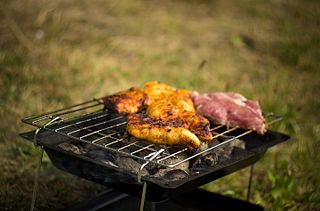
The first brazier grill was a sheet metal pan on top of unstable legs that sometimes included wheels and a grill on the surface. The object of the game was to light and heat the charcoal to the desired temperature. Grilling required that the charcoal be lit in a timely manner so it could develop the patina of grey ash required for cooking. Many outdoor cooks, most often men, tried to speed up the process with the use of lighter fluid. Nothing like the refreshing aroma of lighter fluid on a summer evening. It balanced out the fuel fragrance from decorative tiki torches scattered on the lawn.
There were a number of disadvantages to the brazier grill. Food was often incinerated on the outside and raw on the inside. Smoke blew into the cook’s face. The grill had no vents to control the fire. Rain and wind could make the entire process unpleasant.
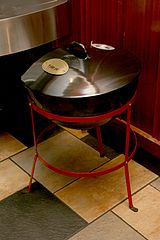
George Stephen observed these drawbacks, and began to tinker. At the time, he worked in sales at the Weber Brothers Metal Works. When Stephen began developing his grill, the company was producing buoys for the Coast Guard. Stephen picked up a buoy and had a eureka moment.
Stephen cut a buoy in half. He installed vents and a grate on the bottom which allowed more control over the fire and the cooking process. The top half fitted neatly over the bottom with a few upper vents. It blocked smoke, and protected the grill from rain and wind.
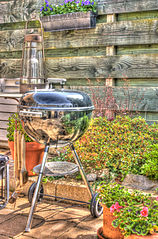
George’s Barbecue Kettle went on sale in 1952 for $27.95. That equates to around $270 which is why my father didn’t spring for one. After all, no real campfire had a lid. In 1958 the Weber Brothers company name changed to Weber-Stephen Products.
Today Weber-Stephen sells electric grills, charcoal grills, gas grills and charcoal smokers.
But it all began as a simple enclosed grill. Here’s one of the advertisements from the 1970s. Check out Paul Pircerni’s hair.
Paul Pircerni was best known for his role as Elliot Ness’s partner in The Untoucables.
The claim that the dome shape reflects heat evenly has not been proven.
???
Meat on Barbecue Grill by Martin Steiger
Gassgrillwagen Landmann Cronos 12771 by S. John, Elsterwerda
Open Hearth Cooking by Billy Hathorn
Reliable Gas Stove and Ranges. 1905
Meat-Barbecue-Grill. Public Domain.
Replica 1951 Weber Grill by Jauerback.
Weber Barbecue by Sander van der Wei
Sara Elliott. “Grilling History 101.” How Stuff Works.
Natasha Geiling. “The Evolution of American Barbecue.” Smithsonian. July 18, 2013.
May Wei-Haas. “The Story of the Weber Grill.” Smithsonian. Sept. 2, 2016

Sandra Wagner-Wright holds the doctoral degree in history and taught women’s and global history at the University of Hawai`i. Sandra travels for her research, most recently to Salem, Massachusetts, the setting of her new Salem Stories series. She also enjoys traveling for new experiences. Recent trips include Antarctica and a river cruise on the Rhine from Amsterdam to Basel.
Sandra particularly likes writing about strong women who make a difference. She lives in Hilo, Hawai`i with her family and writes a blog relating to history, travel, and the idiosyncrasies of life.

